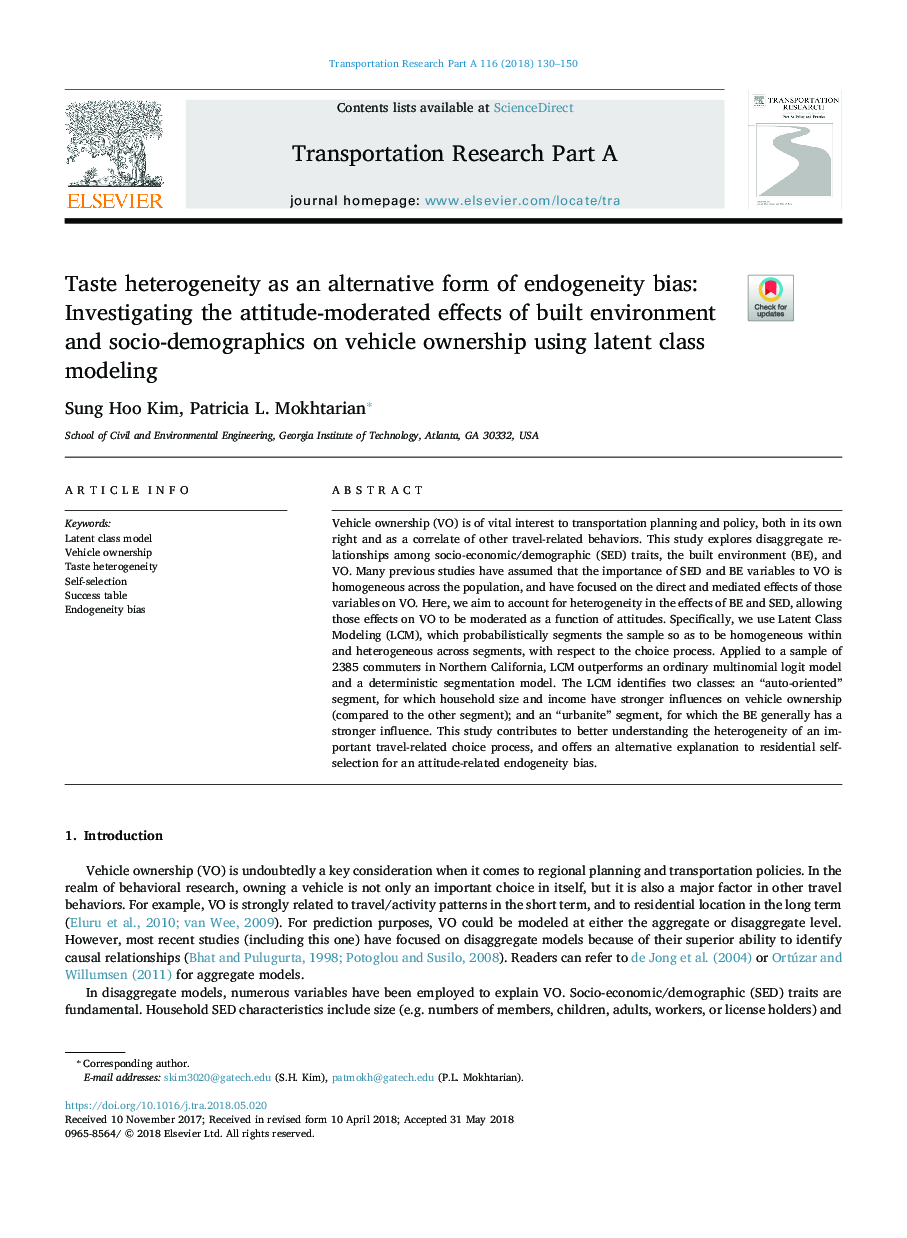| Article ID | Journal | Published Year | Pages | File Type |
|---|---|---|---|---|
| 6779692 | Transportation Research Part A: Policy and Practice | 2018 | 21 Pages |
Abstract
Vehicle ownership (VO) is of vital interest to transportation planning and policy, both in its own right and as a correlate of other travel-related behaviors. This study explores disaggregate relationships among socio-economic/demographic (SED) traits, the built environment (BE), and VO. Many previous studies have assumed that the importance of SED and BE variables to VO is homogeneous across the population, and have focused on the direct and mediated effects of those variables on VO. Here, we aim to account for heterogeneity in the effects of BE and SED, allowing those effects on VO to be moderated as a function of attitudes. Specifically, we use Latent Class Modeling (LCM), which probabilistically segments the sample so as to be homogeneous within and heterogeneous across segments, with respect to the choice process. Applied to a sample of 2385 commuters in Northern California, LCM outperforms an ordinary multinomial logit model and a deterministic segmentation model. The LCM identifies two classes: an “auto-oriented” segment, for which household size and income have stronger influences on vehicle ownership (compared to the other segment); and an “urbanite” segment, for which the BE generally has a stronger influence. This study contributes to better understanding the heterogeneity of an important travel-related choice process, and offers an alternative explanation to residential self-selection for an attitude-related endogeneity bias.
Related Topics
Physical Sciences and Engineering
Engineering
Civil and Structural Engineering
Authors
Sung Hoo Kim, Patricia L. Mokhtarian,
